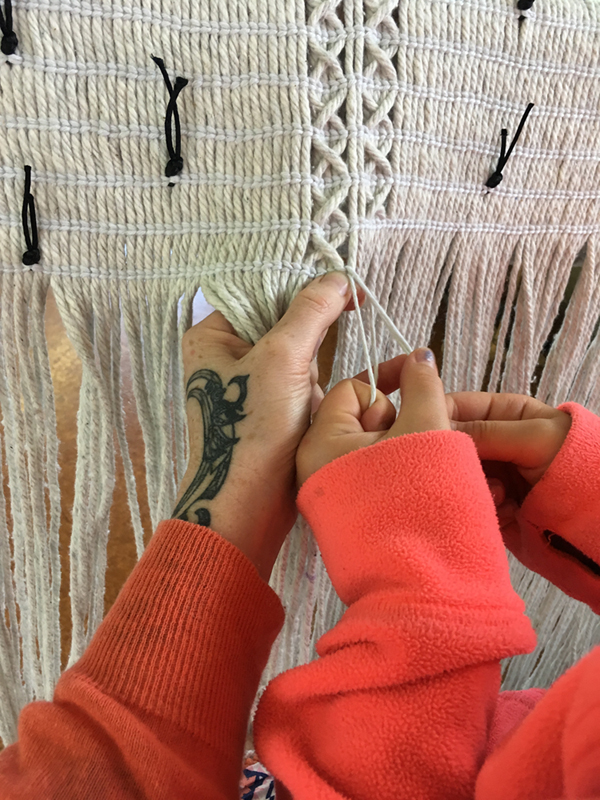The Quilt Speaks: Crafting Gender and Cultural Norms in Hawaii
DOI:
https://doi.org/10.18432/ari29403Keywords:
quilting, Christianity, rhetoric, Native Hawaiian, gender, Indigenous identityAbstract
When protestant missionaries first arrived in Hawaii in the early nineteenth century one of their first concerns was the nudity of the indigenous population and the introduction of cloth and sewing was an early priority. Their hope was that sewing would help turn these savages into appropriate Christians. However, with the introduction of fabric, thread, and metal needles, unexpected skills developed. Feminist scholars have often recognized that so-called “women’s crafts” hold important values. Quilting allows women to work collectively, to reflect on cultural and national values, and to offer political challenges. Analyzing the history of sewing in Hawaii and using the quilts themselves as texts, we can understand how Hawaiian quilts were able to fulfill many of the missionaries’ norms about Christian women, but also subvert aspects of the missionary belief system. Although the West gained influence in the islands, the Hawaiian quilt continued to voice the beliefs of native identity.References
Agosin, Marjorie. Tapestries of Hope, Threads of Love: The Arpillera Movement in Chile. Boulder: Rowman and Littlefield, 2008.
Ariyoshi, Rita. “Shopping: Quilts Stitches in Time Hawaiian Quilts Get a New Airing as a New Generation Discovers Their Special Beauty.” Los Angeles Times, November 6 1994.
Bell, Joshua. “A New Hale for the Nation: The Center for Hawaiian Studies, Mānoa Campus, University of Hawai’i” In Pacific Art: Persistence, Change and Meaning, edited by Anita Herle, Nick Stanley, Karen Stevenson, and Robert Welsch, 114-125. Honolulu: University of Hawai’i Press, 2002.
Bingham, Hiram. A Residence of Twenty-One Years in the Sandwich Islands. 1847. Reprint, Tokyo: Charles E. Tuttle, 1981.
Dwyer, Christy. “Queen Lili’uokalani’s Imprisonment Quilt: Indomitable Spirits in Protest Cloth.” Femspec 9, no. 2 (2008): 2-17.
Fitzpatrick, Ester and Avil Bell. “Summoning up the Ghost with Needle and Thread.” Departures in Critical Qualitative Research 5, no. 2 (Summer 2016): 6-29.
Green and Armstrong. “Report of the Station at Wailuku.” The Missionary Herald 32, no. 10 (October 1836): 389.
“General Letter for the Mission, Dated June 20, 1838.” The Missionary Herald 35, no. 4 (April 1839): 146.
Gulick. “Journal of Dr. Gulick.” The Missionary Herald 50, no.49 (July 1854): 379.
Kaeppler, Adrienne L. “A Survey of Polynesian Art.” In Exploring the Visual Art of Oceania, edited by Sidney M. Mead, 180-191. Honolulu: University Press of Hawaii, 1979.
Küchler, Susanne and Graeme Were. Pacific Patterns. New York: Thames & Hudson, 2005.
MacAulay, Suzanne P. “Tivaevae: Local Aesthetics and Cook Islands Quilts.” Textile Society of America Symposium Proceedings (2000): 409-419.
MacDowell, Marsch and Margaret Wood. “Sewing it Together: Native American
and Hawaiian Quilting Traditions.” Akwe:kon Journal 11, Fall/Winter, (1994): 109-117.
Meller, Norman. “Missionaries to Hawaii: Shapers of the Islands’ Government.” The Western Political Quarterly 11, no. 4 (1958): 788-799.
Ratcliffe, Krista. Rhetorical Listening: Identification, Gender, Whiteness. Carbondale: Southern Illinois University Press, 2005.
Reiko, Brandon and Loretta Woodard. Hawaiian Quilts: Tradition and Transition. Tokyo: University of Hawai’i Press, 2004.
Robinson, Charlotte. The Artist and the Quilt. New York: Alfred A. Knopf, Inc., 1984.
“Sandwich Islands.” The Missionary Herald, 22 (March 1826): 3.
Shaw, Robert. Hawaiian Quilt Masterpieces. Fairfield, CT: Hugh Lauter Levin Associates, 1996.
Stannard, David. Before the Horror: The Population of Hawaii on the Eve of Western Contact. Honolulu: University of Hawaii Press, 1989.
Trask, Haunani-Kay. From a Native Daughter. Honolulu: University of Hawaii Press, 1999.
———. Light in the Crevice Never Seen. Corvallis: Calyx Books, 1994.
Williams, Mary Rose. “A Reconceptualization of Protest Rhetoric: Women’s Quilts as Rhetorical Forms.” Women’s Studies in Communication 17, no. 2 (1994): 20-44.
Published
How to Cite
Issue
Section
License
Copyright (c) 2019 Art/Research International: A Transdisciplinary Journal

This work is licensed under a Creative Commons Attribution-NonCommercial-NoDerivatives 4.0 International License.
Authors who publish with Art/Research International agree to the following terms:
a. Authors retain copyright and grant the journal right of first publication and the right to sublicense the Contribution, in the form in which it is published by the journal, to others under the terms and conditions of the of the Creative Commons Attribution-NonCommercial-NoDerivs (CC BY-NC-ND) that allows others to download the work and share the work with others with an acknowledgement of the work's authorship and initial publication in this journal, but they cannot change the work in any way or use any part of the work commercially.
b. Authors are able to enter into separate, additional contractual arrangements for the non-exclusive public distribution and display of the journal's published version of the work (e.g., post it to an institutional repository or publish it in a book), with an acknowledgement of its initial publication in this journal.
c. Authors are permitted and encouraged to post their work online (e.g., in institutional repositories or on their website) prior to and during the submission process, as it can lead to productive exchanges, as well as earlier and greater citation of published work (See The Effect of Open Access).
d. Authors wishing to include items (such as images or other media, or any creative works of others whether previously published or not) must contact the original copyright holder to obtain explicit permission to publish these items in Art/Research International. Writing permission should include: the title(s) of any copyrighted work, original place of publication if applicable, and an acknowledgement of having read Art/Research International's copyright notice. Authors are responsible for obtaining this permission and keeping it in their own records for later verification.



